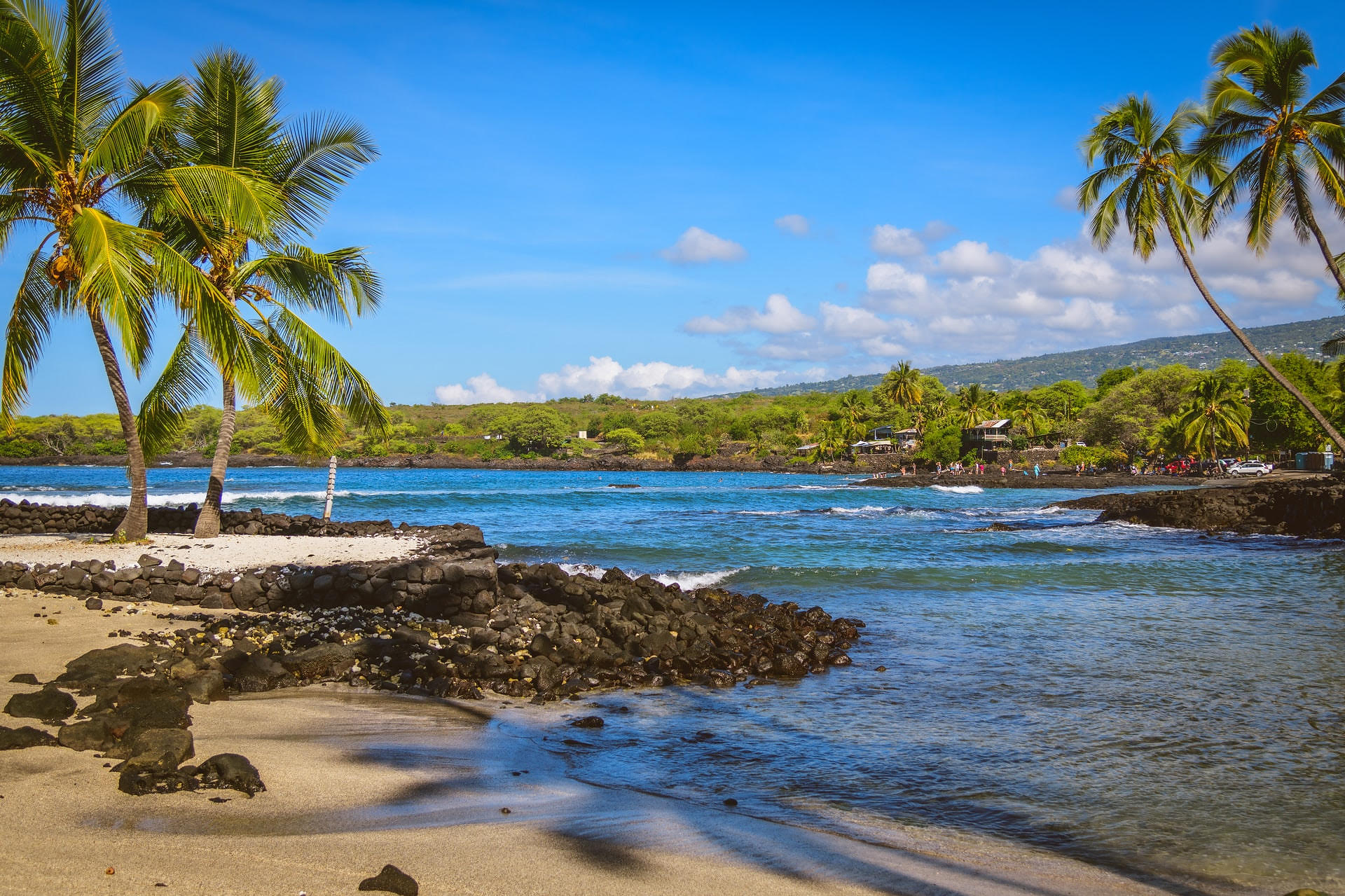Big Island Beauty
Made up of many island paradises, the state of Hawaii attracts visitors from all over the world. But where does one begin to discover the best that Hawaii has to offer when so much beauty abounds? The Big Island ranks as a great place to start, even if you only have time to visit one of the volcanic land masses that makes up the chain of Hawaiian Islands. It’s the biggest of them all and for many, the most beautiful.

Also known as the Island of Hawaii and Hawaii Island, the Big Island is actually the largest island within the United States. Plunked down in the Pacific Ocean, it’s also the third largest island in Polynesia (with the islands of New Zealand being the two largest). About the size of Connecticut, the raw beauty of the Big Island is perhaps the biggest draw. From black sand beaches to snowy white peaks, the diversity of land and seascapes of the Big Island woos visitors and locals alike all year long.
From dry arid desert to wet tropical to polar tundra, the Big Island contains eight out of the thirteen climate zones of the world. These oh-so varied climatic conditions have produced habitats flush with an astounding assemblage of flora and fauna, which is why it’s so much fun to be outside here as much as possible. Whether hiking, biking, beaching it, swimming or surveying this land from the water or from above in a helicopter or even by skydiving, this is the place to be active, adventuresome or simply at ease in a hammock enjoying the renowned Trade Winds of the Island of Hawaii.
With summits soaring up to almost 14,000 feet – as high as those of the Rocky Mountains – you’ll find yourself looking up a lot on the Big Island to take in its magnificence. Here, you’ll also be awestruck by the island’s many volcanoes, many of which are active. A visit to Hawa’ii Volcanoes National Park is a must. It’s an all-day affair, since there’s much to take in from the Visitor’s Center at the bottom of the park just off of Crater Rim Drive to halfway up the Mauna Loa Volcano. (Note that it’s a one-lane road, so breathe in but don’t hold your breath, since the air is thin up there.) At the base, be sure to go to Punalu’u Beach, a black sand beach, and Papakolea Beach, a green sand beach farther down the road near South Point. The latter is considered to be one of only four green sand beaches in the world. (Green crystals called olivine create the green tint; they come from a volcano’s cinder cone that’s some 50,000 years old. Pretty cool, huh?)
Big Island to take in its magnificence. Here, you’ll also be awestruck by the island’s many volcanoes, many of which are active. A visit to Hawa’ii Volcanoes National Park is a must. It’s an all-day affair, since there’s much to take in from the Visitor’s Center at the bottom of the park just off of Crater Rim Drive to halfway up the Mauna Loa Volcano. (Note that it’s a one-lane road, so breathe in but don’t hold your breath, since the air is thin up there.) At the base, be sure to go to Punalu’u Beach, a black sand beach, and Papakolea Beach, a green sand beach farther down the road near South Point. The latter is considered to be one of only four green sand beaches in the world. (Green crystals called olivine create the green tint; they come from a volcano’s cinder cone that’s some 50,000 years old. Pretty cool, huh?)
Going to the top of the crater at Mauna Kea Summit also rates high on the list. You can go to the Mauna Kea Visitor’s Center, partake in one of their free stargazing programs, delight in a spectacular sunset from the top of the volcano or just enjoy the drive up. Like many other places on the island, you can venture out on your own or take a tour.
Keep in mind that the two most populated locales on the island are Hilo (to the east) and the Kona Coast (to the west). Both offer wide-ranging experiences. Hilo is much about flourishing rainforest hikes, cascading waterfalls and the opportunity to see red-hot lava flow. Kona is known for its dry, sunny weather, white-sand beaches, boating excursions, including whale watches, and, of course, lots of delicious coffee sipping. You can even go on a Kona coffee tour! Greenwell Farms in Kealakekua offers one of the best.
Cacao farm tours on Kona and Hilo are also beautiful and fun; check out Puna Chocolate Company and Lavaloha, a chocolate farm ten minutes from downtown Hilo. That’s right – a chocolate farm! Well, actually they grow cacao beans there, however, you can buy all kinds of delicious chocolate from them as well.
Although you’ll take in lots of wondrous plant species all around the Big Island, the Hawaii Tropical Bioreserve & Garden showcases them within one beautiful botanical garden and nature preserve. Situated along the four-mile scenic route off of Route 19, whether you’re a gardener, botanist, nature lover, photographer or just a tourist (in the best sense of the word!), a visit here will help you to explore and learn about the wonderful biodiversity of Hawaii.

Snorkeling around the Big Island’s colorful coral reefs offers the opportunity to experience much of Hawaii’s marine life up close and personal. If you’re not into swimming with manta rays, you can enjoy a different kind of ocean-immersive experience at the Mokupāpapa Discovery Center. Housed in an historic building in Hilo, their 3,500-gallon saltwater tank serves as the main attraction here although this educational center also shines for its interactive exhibits, artwork, events and more.
Whatever you do, know that you can easily go big on the Big Island of Hawaii.


